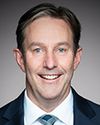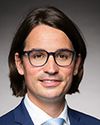Yes, he definitely raised the point.
On average recently, we've seen about 70 medical students a year go unmatched after the second iteration. Oftentimes we have many family medicine seats that are available, especially in the province of Quebec. They do a better job of making more seats available.
Oftentimes this becomes a political issue. As you might see in the province of Alberta, our physicians don't actually have a contract, so there is a lot of variation in what their compensation can look like. That definitely has an impact on people wanting to match to family medicine here in Alberta. This year, 26% of our family medicine seats went unmatched at the University of Calgary, which is the highest we've seen.
As somebody who wants to match here in the province of Alberta, because my family is here and my ancestry is from the Cold Lake First Nation up in northern Alberta, I would love to be able to stay here and practise here in my province. Unfortunately, there is a political aspect to medicine, as you see here as we're representing to you today, because there are political pieces that support our ongoing success and governments decide residency spots. Therefore, we need to work with them to develop programs that have seats for students, to be able to continue to train them.





